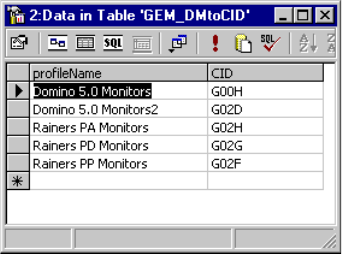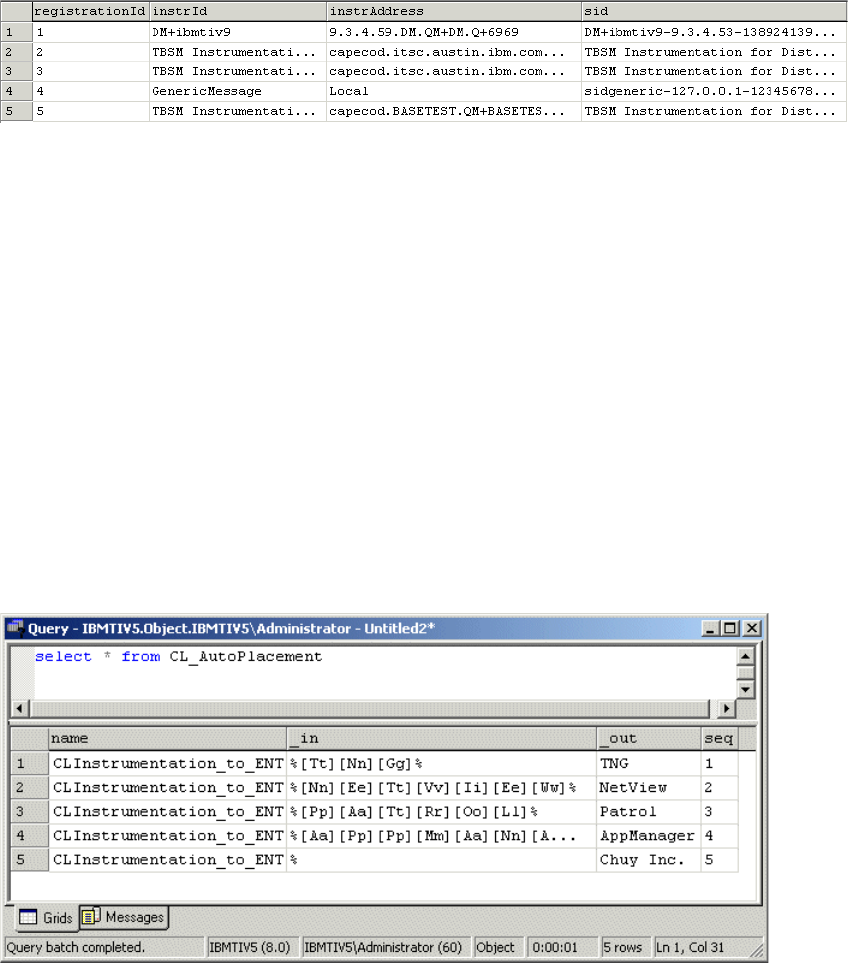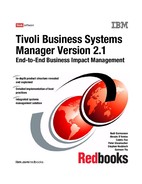
Chapter 3. Database structure 95
Figure 3-10 GEM_DMtoCID
The Enterprise outliner view for a GEM object has the following hierarchy:
BUSC - Enterprise - Network Region - Network Location
These tables are used to get the necessary information for placing the GEM
object in the Enterprise Outliner.
GEM_EEHostToEnterprise Maps the event enablement host name to the
Enterprise object. We map our machine brewster
to ITSO enterprise.
GEM_LocationToRegion The Network Region object name is derived from
the location. The default derivation is to take the
second qualifier of the location name.
GEM_HostnameToLocation The TCP/IP host name is used to obtain the
Network Location parameter. The default location
is derived from the second and third part of the
TCP/IP host name.
For example, IBM Tivoli Business Systems Manager creates the following
hierarchy for resources residing in ibmtiv9.itsc.austin.ibm.com:
Enterprise - austin - itsc.austin - ibmtiv9.itsc.austin.ibm.com - resources
3.6 Common listener resources
The common listener resources are constructed as a set of tables and stored
procedures. When a common listener data source first connects, it registers itself
in the CL_Registration table. In our setup, we have IBM Tivoli NetView and IBM
Tivoli Monitoring Common listener data sources. Therefore our CL_Registration
table is shown in Figure 3-11 on page 96.

96 Tivoli Business Systems Manager Version 2.1: End-to-End Business Impact Management
Figure 3-11 CL_Registration
The common listener interface can send three types of transactions:
? Bulk data, typically sent on the initial connection to tell the common listener
about all available resources from a particular source
? Delta data, sent regularly to update the resource in the common listener
source
? Event data, typically sent on change of status or other important notification to
IBM Tivoli Business Systems Manager
These transaction are sent in XML format conforming to Simple Object Access
Protocol (SOAP). The content is stored temporarily in the common listener
staging tables CL_StageBulkData, CL_StageDeltaData, CL_StageEvData.
These operations can affect two types of objects: a resource object or a link
definition. An object will be created in the IBM Tivoli Business Systems Manager
database based on the enterprise specified in the CL_AutoPlacement table. Our
CL_AutoPlacement table is shown in Figure 3-12.
Figure 3-12 Common listener auto placement table
..................Content has been hidden....................
You can't read the all page of ebook, please click here login for view all page.
